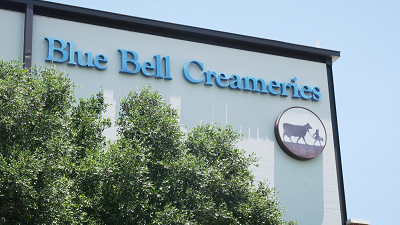Underinsurance and Its Rippling Effect
Insurance agents have an understated, but important burden to bear. As quintessential salesmen, it is imperative for them to obtain a foothold in the insurance marketplace with a value proposition that rings louder than the talking geckos and the “Flos” of the marketing world. Even more poignantly, it is their job to impress upon prospective customers that the dangers of underinsurance are real.
Middle market business owners are often hesitant to buy into exorbitantly priced insurance policies—but when their industries top the annual “most dangerous” list, they remember that the need for comprehensive coverage will always linger and affect them when unintended losses occur. Middle market businesses in industries such as construction, transportation and freight, retail, infrastructure development, and even agriculture have fought an uphill battle, mitigating the inherent operational risks that plague them.
 Underinsurance in any capacity could cripple an organization’s ability to keep afloat despite the other risk provisions that may have been put in place. Some losses may not satisfy the policy triggers that warrant a claim. In those cases, should business owners scurry to find additional coverage or warranties? What are the real options made to business owners who’ve already made the commitment to protect their organizations from financial ruin? The answers to these questions are compelling because depending on the industry, underinsurance could have a devastating rippling effect, from discovery and production through to supply chains.
Underinsurance in any capacity could cripple an organization’s ability to keep afloat despite the other risk provisions that may have been put in place. Some losses may not satisfy the policy triggers that warrant a claim. In those cases, should business owners scurry to find additional coverage or warranties? What are the real options made to business owners who’ve already made the commitment to protect their organizations from financial ruin? The answers to these questions are compelling because depending on the industry, underinsurance could have a devastating rippling effect, from discovery and production through to supply chains.
Regardless of where a company does business, and no matter the specific product or service it provides, a lack of coverage for specific risks puts a financial strain on company leadership. Knowing what these risks are is an important first step toward a solid risk management plan--how a company chooses to cover these risks is an equally critical undertaking.
Construction Risks
The construction industry is experiencing a dramatic rebound, with businesses in the public and private sector acquiring the green light to build both residential and commercial properties across the United States. In April 2015, the U.S. Census Bureau and Department of Housing and Urban Development released a statement containing data on the explosive growth of new residential construction. New privately-owned housing starts – a category that includes single-family and multiunit housing -- rose to a seasonally adjusted rate of 1.14 million. Up 20.2 percent month over month, it was the sector's largest monthly gain since November 2007 and represented a 9.2 percent jump year over year.
The problem is, the industry is essentially playing catch-up. Between 2006 and 2011, construction companies laid off 30 percent of its workforce. The vast majority of the U.S. had been rocked by the housing crash, credit squeeze, and other factors that went into the construction industry’s decline. The hardest-hit states have been Nevada, California, Michigan, Illinois, and Florida.
Before the recession, Nevada had 64% more construction jobs per capita than the nation. Now it has 8% fewer jobs per capita — that’s a change in location quotient from 1.62 to .92 in six years (Source: Economic Modeling). Although middle-market construction/development maintained general liability insurance, most could not handle the slump in demand during the recession. Layoffs and lost revenue took hold as a regrettable consequence of underinsurance and slowed economic activity. Having an alternative risk management plan, such as the implementation of a captive insurance company, might have thwarted those risks, lessening the impact of the housing crisis.
Vice President of Business Development at Capstone, Lance McNeel commented, "Today, demand is high and profits are up, but construction isn’t out of the water. In lieu of the new housing boom, there’s a growing concern that developers are cutting corners, racing to get a larger piece of the pie. There’s a fear that poorly built developments could warrant lost revenue as consumer complaints ramp up."
Financial risks resulting from construction defects are posing a problem for both home buyers and construction companies, echoing the substandard projects that were being built during the last housing boom in the early 2000s. Back then, the number of complaints among homebuyers grew steadily. New construction stalled, leaving only the most seasoned developers to continue to build. Untested developers are again looking to capitalize on the industry’s forward momentum. Some builders may choose less expensive building materials while others may hire unqualified subcontractors (Source: NY Times – New, But Far From Perfect). The repercussions could prove disastrous, as commercial general liability insurance (CGL) can only go so far.
Unlike a commercial general liability (CGL) policy that provides insurance for bodily injury and property damage, a professional liability policy pays for other third-party damages beyond BI and PD.
Professional liability policies provide coverage for damages that result from the rendering of acts, errors, and/or omissions in professional services or should have been rendered by or on behalf of the named insured (the design or construction professional).
These coverages are generally more expensive in the marketplace.
Even with CGL, Underinsurance Can Wreak Havoc
There’s some debate on whether defective construction falls under the confines of an “occurrence” or policy trigger under commercial general liability coverage. If the policy has other provisions, extending coverage for that risk could be avoided, particularly coverage preserved under the limited business risk exclusions. In the past two years, there have been many court cases that have ruled on this issue, but there hasn’t been a consensus from state-to-state. The issue is that CGL insurance coverage, depending on the issuer, can carry exclusions, including those that do not cover construction defects.
CGL insurance coverage for many defective coverage claims turned on the applicability of exclusions relating to damage to the insured's own work, meaning intentional acts or gross negligence (Source: Risk & Insurance).
“Property damage arising out of defective construction doesn’t necessarily fall on the construction company—it could come from the home buyer or subcontractor," McNeel said. "But this hasn’t yet been settled. The best choice for developers is to buy general liability coverage and implement additional risk management options which include broader coverages. Captive insurance provides flexibility and diversification in the types of policies written, which can account for those liabilities that have not yet been determined in court.”
In this new climate of growth, business owners in the construction sector should be conscious of the risks that are inherent in their industry. The motivation to compete for new projects could bring about unintended consequences such as defective structures, mold, etc. as contractors and subcontractors cut corners to spur revenue. Savvy business owners or those in leadership roles cannot anticipate losses, but they can take action to mitigate risks, even when profit margins are high. Self-insuring a business by way of a captive insurance company is a more than viable way to prepare a business to cover unexpected losses, while also leveraging the benefits, such as improved tax planning, secured loans, and dividends.
Manufacturing and Retail Risks
 Prior to 1986, large businesses, many of them Fortune 500, were the only types of businesses that could be insured through a captive insurance company. The captives were bona fide insurance companies established specifically to cover the risks of their affiliated business. But in an attempt to strengthen the economy and support smaller, midmarket organizations, Congress adopted section 831(b) of the Internal Revenue Code. This allowed family-owned, or closely-held businesses to form and operate captive insurance companies, leveling the playing field. By forming captives under this special section of the Code, middle-market organizations could insure non-standard risks and take advantage of significant tax incentives. Forming a captive insurance company would ensure that potential losses will be covered without the worry of exclusions—more inclusive policies could be written for the specific risks of its affiliated company.
Prior to 1986, large businesses, many of them Fortune 500, were the only types of businesses that could be insured through a captive insurance company. The captives were bona fide insurance companies established specifically to cover the risks of their affiliated business. But in an attempt to strengthen the economy and support smaller, midmarket organizations, Congress adopted section 831(b) of the Internal Revenue Code. This allowed family-owned, or closely-held businesses to form and operate captive insurance companies, leveling the playing field. By forming captives under this special section of the Code, middle-market organizations could insure non-standard risks and take advantage of significant tax incentives. Forming a captive insurance company would ensure that potential losses will be covered without the worry of exclusions—more inclusive policies could be written for the specific risks of its affiliated company.
Although alternative risk management strategies such as captives are now available, business owners may still choose to rely solely on their commercial coverages. The dangers of underinsurance can arise, even after years of having “adequate” coverage. Businesses that have been fortunate enough not to have experienced a loss may go decades with bare minimum insurance coverage. Business owners may go years without augmenting their coverages as their businesses grow and change. This happened in the case of Blue Bell Creameries, which is now working to mitigate the financial and reputational effects of a voluntary recall.
Blue Bell Creameries LP is a well-known food manufacturer, producing and selling ice cream products in 23 states. The company’s ice cream had been linked to a listeria outbreak which led to three deaths and numerous cases of illness across the United States. Moreover, the company knew that listeria was present in one of its factories as early as 2013, according to documents released by the Food and Drug Administration. Still, Blue Bell failed to adequately improve its cleaning and manufacturing practices, according to an F.D.A. report.
Blue Bell’s CEO and president Paul Kruse was forced to lay off more than 1500 employees and reduced the salaries of their remaining workforce due to the fallout. The company might have benefited from having product recall or reputational insurance under a captive, whereby coverages could prove far-reaching. Out-of-pocket expenses would have been nominal, as coverages underwritten by the captive would be supplemental to the company’s existing insurance arrangement.
Bottom line: Commercial coverages might exclude risks that are inherent in manufacturing and retail sectors. Product liability insurance refers to the liability for damages against the manufacturer for bodily injury and property damage stemming from a defective product. In other words, this type of insurance offers protection in the case that a consumer becomes injured from using the product.
For those in the business of selling or manufacturing products, the responsibility of ensuring the high quality of their products typically rests on them. This means they are legally responsible for damages that may arise from the use of their products (Source: www.productliability.org). Manufacturing or production flaws, design defect, or defective warnings (mislabeling or insufficient warnings for the consumer to understand the risk of the product) are all claims that could be brought against a manufacturer. As seen in the case of Blue Bell, a food manufacturing company, the repercussions of underinsurance are proving to be more afflictive than its leadership anticipated.
In general, middle-market businesses in the retail or manufacturing spaces should take a closer look at how their current insurance coverages could affect their ability to recover from a potential loss.
Transportation and Logistics Risks
 The movement of raw materials is part of the undercurrent of U.S. trade. By road, sea, air, and rail, products are transported to processors, developers, and retail establishments, spurring economic growth across the country. Keeping track of it all through logistics is important to keeping the supply chain intact. In general, the transportation and logistics industry ensures that the U.S. maintains its position as a lead exporter and contributor to the global economy. Risks are inherent though—business owners in the transportation and logistics sectors must adhere to federal safety regulations. But sometimes, these safety measures cannot fully protect workers from all risks. Underinsurance puts an additional layer of potential financial loss to suppliers, transportation companies, and retailers.
The movement of raw materials is part of the undercurrent of U.S. trade. By road, sea, air, and rail, products are transported to processors, developers, and retail establishments, spurring economic growth across the country. Keeping track of it all through logistics is important to keeping the supply chain intact. In general, the transportation and logistics industry ensures that the U.S. maintains its position as a lead exporter and contributor to the global economy. Risks are inherent though—business owners in the transportation and logistics sectors must adhere to federal safety regulations. But sometimes, these safety measures cannot fully protect workers from all risks. Underinsurance puts an additional layer of potential financial loss to suppliers, transportation companies, and retailers.
The nationally-known Alabama train derailment is a prime example. In 2013, a 90-car train carrying North Dakotan crude derailed and exploded in a rural area of western Alabama. Although no one was injured, 300-foot flames engulfed the train, destroying it and nearly 750,000 gallons of its 2 million gallon load of crude were spilled in wetlands, a half-mile south of the town of Aliceville. A local official said the crude oil had originated in North Dakota, in the profitable Bakken shale patch.
More oil companies are opting to move raw crude oil by rail to refineries in the race to capitalize on the booming shale industry, without a true assessment of the risks involved. A shortage of pipelines has also played a role in the practice. Today, more than 10 percent of the nation’s total oil production is shipped by rail--in 2013, about 400,000 carloads of crude oil traveled by rail to the nation’s refineries, up from 9,500 in 2008, according to the Association of American Railroads (Source: NY Times: Accidents Surge as Oil Industry Takes the Train). Railroad and logistics companies in the private sector have a unique advantage in mitigating risks by opting for an alternative risk management solution, such as the formation of a captive insurance company. The dangers of underinsurance are being reflected in both national and regional news. Thousands more incidents go underreported but are felt by businesses nonetheless.
In the commercial trucking sector, other risks must be considered as the U.S. employs an estimated 8.9 million people are employed in trucking-related positions. The United States Department of Transportation estimates that over 500,000 truck accidents occur every year. In fact, one person is injured or killed in a truck accident every 16 minutes.
The financial costs weigh on businesses as well. Fuel prices, taxes, equipment and operational cost fluctuations, cyber risks, mechanical failure, property losses, piracy, terrorist attacks and other risks play a role in the success or failure of trucking companies. Business interruption losses that occur as a result of these risks not only affect the trucking businesses, but manufacturers and retailers as well. Many risks affecting the industry are largely out of any one business or individual’s control, but mitigating them is a responsibility that every leadership team should take on.
Conclusion
Opting for commercial coverages is the first line of defense against lost property and revenue, but gaps in those coverages warrant a strong auxiliary strategy. With the proper formation of a captive insurance company, middle-market businesses in the trucking, marine, railway, and air transportation sectors can reduce their financial liability for both catastrophic events and unexpected business interruption. Underinsurance shouldn’t interfere with the successful recovery of a company when losses occur. For a business owner working in an industry where risks are present, the protection of that organization should come as a necessary effort. Full coverage, no matter how it is structured, will provide for a stronger, more resilient organization.




